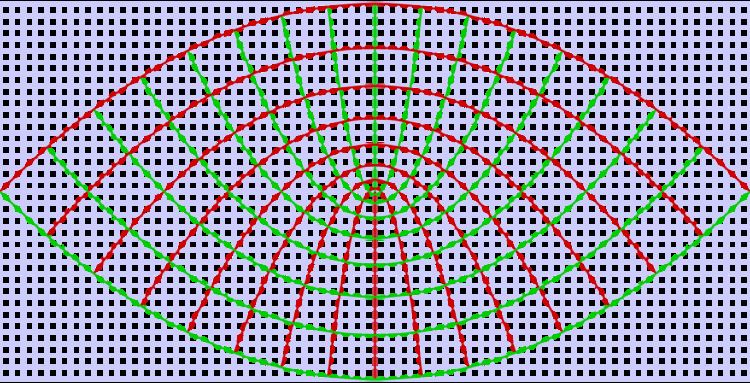 | ||
Parabolic coordinates are a two-dimensional orthogonal coordinate system in which the coordinate lines are confocal parabolas. A three-dimensional version of parabolic coordinates is obtained by rotating the two-dimensional system about the symmetry axis of the parabolas.
Contents
- Two dimensional parabolic coordinates
- Two dimensional scale factors
- Three dimensional parabolic coordinates
- Three dimensional scale factors
- References
Parabolic coordinates have found many applications, e.g., the treatment of the Stark effect and the potential theory of the edges.
Two-dimensional parabolic coordinates
Two-dimensional parabolic coordinates
The curves of constant
that open upwards (i.e., towards
that open downwards (i.e., towards
Two-dimensional scale factors
The scale factors for the parabolic coordinates
Hence, the infinitesimal element of area is
and the Laplacian equals
Other differential operators such as
Three-dimensional parabolic coordinates
The two-dimensional parabolic coordinates form the basis for two sets of three-dimensional orthogonal coordinates. The parabolic cylindrical coordinates are produced by projecting in the
where the parabolae are now aligned with the
The surfaces of constant
that open upwards (i.e., towards
that open downwards (i.e., towards
The Riemannian metric tensor associated with this coordinate system is
Three-dimensional scale factors
The three dimensional scale factors are:
It is seen that The scale factors
and the Laplacian is given by
Other differential operators such as
